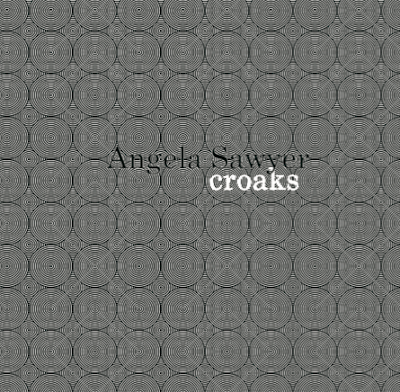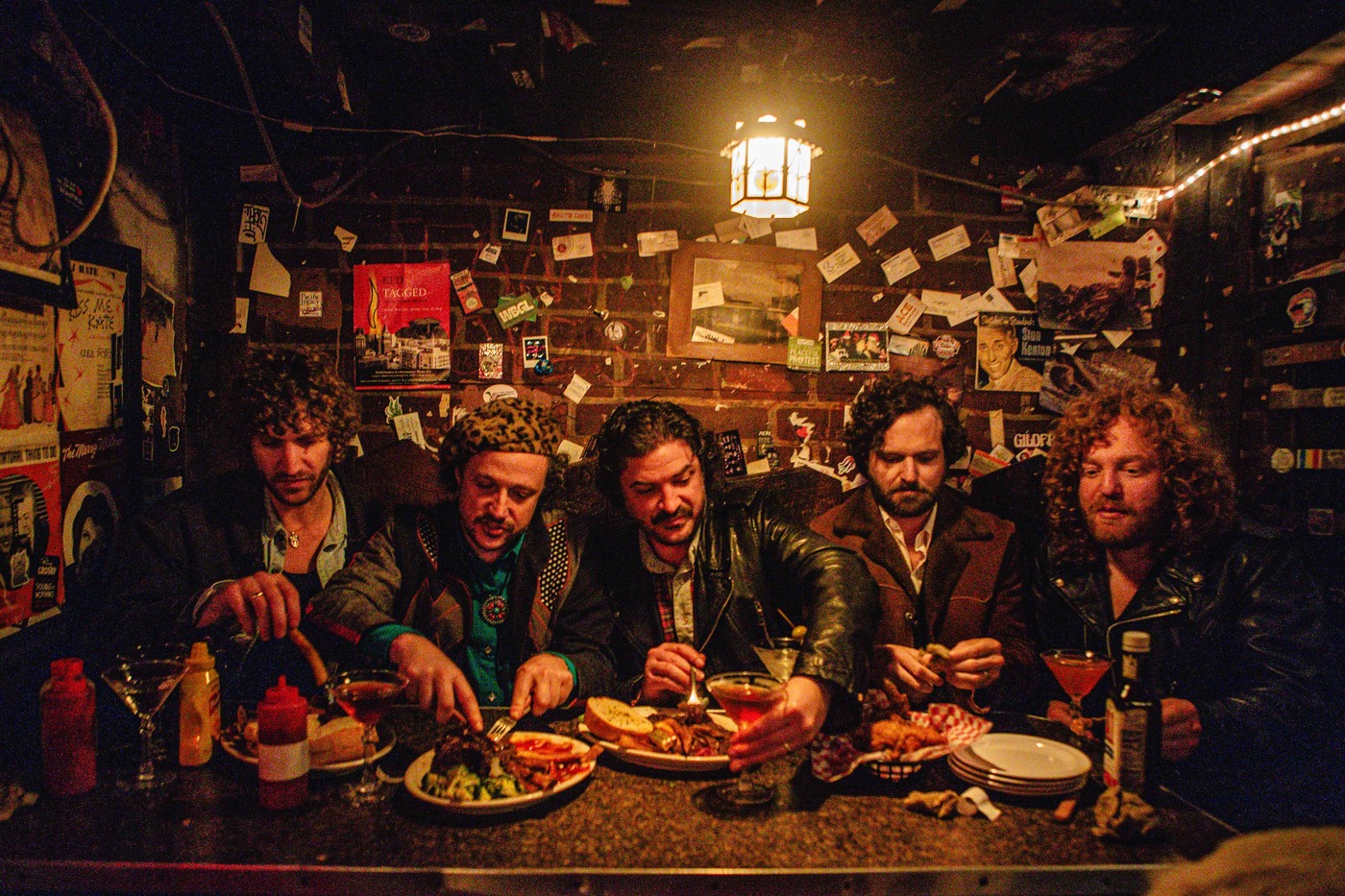Angela Sawyer interview
“You’re allowed to turn your faults into your charms”
With Croaks, Angela Sawyer made an album with 2 side-long tracks, using only one instrument: her own voice.
Why did you want to make a voice record?
I use voice a lot, because I have a wider range of resources there than I do with some other instruments. I think of music as something you make primarily with your head (as opposed to your hands), so any instrument or even using no instruments is always an option.
I have a whole lot of art theories about how the different parts of your head have to work together to make something. That’s mostly just because I’m a big fan of theories in general. However, I also happen to have a weird sinus cavity, which gives my voice a lot of ‘color’. It’s extremely whiny up in the nasal register, and very unresonant at the bottom end where people sound like frogs. Lots of textural ambiguities arise when you chop off the first milliseconds or last half of a typical sound, and although there are lots of vocal skills I’m bad at (terrible breath control, e.g., Galas could choke me out in seconds flat), I’m pretty good at that chopping and color stuff, which is also known as tone.
Plus I plain love singing. What I hear inside my skull sounds a lot like Mary Ford. Trapped in a tape recorder it’s a whole lot closer to Tiny Tim or Helen Kane. That should be a disadvantage, but luckily, in experimental music you’re allowed to turn your faults into your charms. And I definitely learned how to make music from records. Phil Minton has the best Daffy Duck impression in the cosmos. Joan Labarbara taught me how to circular-sing, and I hope I never get done learning stuff from her.
Do you see these 2 tracks as experiments or as studies? Or maybe just as ‘fooling around’? Or can it be all of that?
This album specifically came out of trying to make a low-rent version of records like Rashad Becker’s Notional Species or Jake Meginsky on Open Mouth. To my mind, those are records that play with how people perceive time/rhythm on a moment-to-moment scale. They are only interested in the imaginary space that a stereo field creates insofar as it relates to very subtle timing perceptions. There’s almost no pitch information, and the Phil Spector project of a sonic Disneyland is heavily refocused and aimed toward an incredibly narrow goal. Those dudes might just think about what they’re doing as making cool beats, and that is also entirely true.
But for my part, I tend to hear music very vertically. By which I mean that I have a much finer ear for pitch than I do for rhythm, so I tend to think about it as a bunch of stacked blocks with interchangeable parts. I suppose people who are better at rhythm than pitch (which is far, far more common) might think about it as pulling a rope with variously spaced knots, or a road with bumps, etc. I wanted to see what would happen when I applied the bag of tricks I picked up listening to harmonically interesting records to a world with very limited harmony.
All of that is just a long-winded way of saying that I’m a longtime fan of the Beach Boys, and I figured it would be cool to hear what happened if they just used burps or popping noises instead of instruments and lyrics. I’m also American, so I did it while working four awful jobs and waiting to see a doctor for months on end (those same sinus cavities mean that I’m sick all the time). I spent $0, got the recording equipment out of the garbage, and did at least some of it while nobody was paying attention at work. For the parts at home, one of my 14 roommates probably either waved a gun around or prayed out loud in an adjacent room. It’s rough-edged and piecemeal. There’s lots of edits in some spots, and almost none in others.
I also tried a bunch of things for this record that didn’t work. I recorded a whole series of creaky doors, an entire Dungeons and Dragons game. I caught hours of mouth noises while cramped in closets or car seats, visited the underside of the longest bridge in North America for its echo, etc. Nothing turned out as well as just sitting next to a microphone in a dry room making the same noise over and over again. So that’s what ended up on the record.
More importantly, it wouldn’t have come out at all if it wasn’t for the constant and constantly boggling generosity of Ted Lee. He alone is the cause of probably 70% of the interesting sound in New England, and is a fantastic fella to boot.
Why did you decide to use your own name for this record (and not a moniker)? Is it because it’s personal?
I usually let whoever is doing the most thankless part of the work (a booker, a label, etc) choose whether to call it Angela Sawyer or Preggy Peggy. I don’t specifically recall it, but that’s probably what happened here. I find that some people like one and some the other, while both are fine with me.
What is it that you do on the “Croaks” track? Because it sounds more like something you do with your throat than with your voice.
The two sides aren’t that different in terms of the specific techniques used. They both use inhaled noises and exhaled noises in roughly equal measure. And although your mouth is a super sophisticated envelope filter, you’re right to note that I used it very little. Close up all the vocal folds in your neck real tight, you get a low pop. Relax em all the way, you get a car horn.
I can enjoy vocal exercises when they sound like poems without words (like in the work of Henri Chopin or Brion Gysin), I don’t like vocal exercises when it becomes voice acrobacy (like with Mike Patton or Diamanda Gallas). Was this something that you felt you had to take care of; that it wouldn’t become: ‘being freaky’, like doing something ‘strange’ or ‘unusual’ with your voice?
Although it’s not my thing particularly, and I’m not super into Mike Patton either, I want to take a second to encourage you not to compleyely dismiss records that come out of acrobatic exercises. Peter Kowald’s Was Da Ist and Anthony Braxton’s Alto Saxophone Improvisations 1979 solo 2LP on Arista are really good counterexamples here. The idea of repeating something so much that you begin to play with tiny variations on the pattern, or perhaps a blur of many overlaid patterns, is super powerful and drives music from Bach to Cage and a great big shovelful besides. Part of the reason I think records are important is that they let you break down the fences you might not realize you have in your head. You want to be able to think critically, but from a wide vantage that includes ALL of what’s good out there. So when you ask if I want to avoid being freaky, I have to tell you that I find being freaky is the whole point in the first place.
Do you feel like Croaks is you most radical record?
Like anyone who lived through the 1980s, I’m sure the best way to make a radical record would be to record a bunch of skateboards. Maybe that’s what I should do next.
– Joeri Bruyninckx
© Copyright http://www.psychedelicbabymag.com/2017
Array




